Understanding Stimulant Addiction
Learn About Stimulant Abuse & Addiction
Stimulants are a type of drug that increase the activity of the central nervous system, which includes the brain and spinal cord. When taken in small doses, they can increase alertness and attention, but when taken in large doses, they produce euphoria and strong feelings of pleasure. Stimulants act primarily on two neurotransmitters: norepinephrine and dopamine.
Stimulants are extremely common, and many people use stimulants every day; the caffeine in soda and coffee and the nicotine in cigarettes are both stimulants. Physicians prescribe stimulants such as Ritalin and Adderall to treat attention-deficit/hyperactivity disorder (ADHD). Not all stimulants are as benign as caffeine, however. Drugs like cocaine, amphetamine, and methamphetamine are also stimulants. All stimulants, legal and illegal, have the potential to be abused. When people use stimulants enough to negatively affect their daily lives, they may meet criteria for a stimulant use disorder.
Because they vary widely in potency, stimulant use has a spectrum of consequences, ranging from relatively minor insomnia after drinking coffee too late in the day to life-threatening overdoses on methamphetamine. Thankfully there is help available for those who wish to be free from the influence of stimulants in their lives.
Statistics
Statistics for Stimulant Abuse
According to the Substance Abuse and Mental Health Services Administration (SAMHSA), nearly two million people in the United States suffered from stimulant use disorder in 2013. Of these, the majority use cocaine as their primary drug of choice. Cocaine is perhaps the most commonly abused stimulant, with 35 million American adults reporting they have tried it at least once. Meth is also a dangerous and popular drug, with roughly two million Americans saying they have used it in the 30 days before being surveyed. Meth is also responsible for approximately 90 percent of all substance abuse treatment cases in the U.S.
Causes & Risks
Causes & Risk Factors of Stimulant Addiction
While no one factor can predict which people will develop stimulant use disorder, most researchers agree that an interaction of both genetic and environmental factors is to blame. These include the following:
Genetic: There is a robust link between family substance use and individual substance use. If a person’s family members use substances, that person is much more likely to also develop a substance use disorder. Studies of identical twins confirm this genetic vulnerability. In addition, recent research is beginning to identify possible genetic markers associated with a greater likelihood of developing a substance use disorder.
Environmental: Children who grow up in homes with people who use substances are more likely to use substances themselves once they are adults. In addition, other environmental factors can increase a person’s likelihood of developing a substance use disorder. These include stressors such as violence, poverty, unemployment, and trauma. Stimulant use is especially common in those who work in high-pressure jobs as the use of stimulants may provide a boost of energy or productivity.
Risk Factors:
- Easy access to stimulants
- Family history of mental illness or substance use
- Personal history of mental illness or substance use
- Chronic stressors, such as poverty, repeated violence, or unemployment
- Trauma
- High-pressure work environment
- Exposure to stimulants in utero
- Men are more likely than women to abuse stimulants
Signs and Symptoms
Signs & Symptoms of Stimulant Addiction
The evidence of stimulant abuse varies from person to person and depends on an individual’s personality as well as the length and severity of use. However, the following are some common signs and symptoms of stimulant use:
Behavioral symptoms:
- Seeking out multiple prescriptions for stimulants
- Twitching or jitteriness
- Excessive energy
- Constantly feeling the need to speak
- Deception, lying, or stealing
- Secretiveness about one’s whereabouts and activities
- Engaging in risky or impulsive behavior
Physical symptoms:
- Rapid heartbeat
- Elevated blood pressure
- Changes (usually a decrease) in appetite
- Weight loss
- Hair loss
- Impaired sexual performance
- Disrupted sleep
- Sweating
- Skin problems
Cognitive symptoms:
- Rapid thoughts
- Flight of ideas
- Enhanced sensory awareness
- Hyperfocus
- Confusion
- Poor judgment and decision-making
- Hallucinations
- Delusions
Psychosocial symptoms:
- Withdrawal from family or friends
- Anger or aggressiveness
- Increased confidence
- Mood swings
- Anxiety
- Depression
Effects
Effects of Stimulant Abuse
When left untreated, stimulant abuse can be severe and have substantial, negative effects, including:
- Insomnia
- Inability to experience pleasure
- Social isolation
- Stress on relationships
- Divorce
- Loss of child custody
- Sexual dysfunction
- Liver, kidney, lung, or cardiovascular damage
- Deficits in memory, concentration, attention, and problem-solving abilities
- Aggressive behavior
- Job loss and financial problems
- Seizure
- Death
Co-Occurring Disorders
Stimulant Addiction and Co-Occurring Disorders
Often people who turn to stimulants do so to cope with other disorders. Some of the most common co-occurring disorders include:
- Post-traumatic stress disorder
- Anxiety disorders
- Depressive disorders
- Bipolar disorder
- Schizophrenia
- Eating disorders
- Other substance use disorders
- Attention-deficit/hyperactivity disorder
Withdrawal & Overdose Effects
Effects & Symptoms of Withdrawal from Stimulants
Effects of stimulant withdrawal: Ceasing the use of stimulants after a long period of use can produce uncomfortable and possibly dangerous symptoms as the body attempts to readjust to functioning without the drug. This process is called withdrawal, and can have the following effects:
- Intense stimulant cravings
- Dehydration
- Extreme hunger
- Muscle spasms or jitteriness
- Irritability and frustration
- Insomnia
- Hallucinations
- Delusions
- Musculoskeletal pain
- Sweating or chills
Effects of stimulant overdose: In the course of chasing a high, it is possible to ingest more of a drug than a person’s body can effectively metabolize. This is called an overdose and it can be fatal, especially if the person experiencing it does not receive medical attention. Symptoms of an overdose include:
- Rise in body temperature or blood pressure
- Heart or kidney failure
- Shallow, labored breathing
- Delirium or confusion
- Convulsions or seizure
- Stroke
- Loss of consciousness or coma











